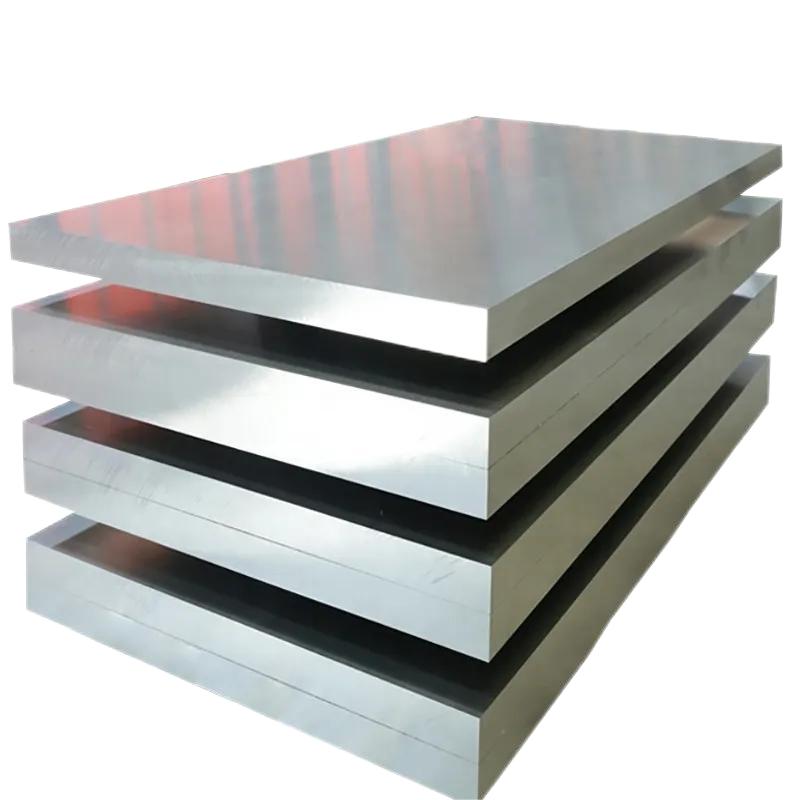Composition and Alloying Elements
The 5-series aluminum alloy plates, also known as aluminum-magnesium alloys, have magnesium (Mg) as their main alloying element. The magnesium content usually ranges from 0.5% to 5%. In addition, small amounts of other elements such as manganese (Mn), chromium (Cr), and titanium (Ti) may also be added. Manganese helps to improve strength and corrosion resistance, while chromium can enhance the processing performance and dimensional stability of the alloy during heat treatment. Titanium is added in trace amounts to refine the grain structure, thereby improving the overall mechanical properties.
Mechanical Properties
Strength
These alloy plates achieve a good balance between strength and formability. The yield strength of 5-series alloys can range from 100 megapascals to over 300 megapascals, depending on the specific alloy and temper condition. For example, the 5083 alloy in the H321 temper condition has a yield strength of approximately 170 megapascals, making it suitable for applications with moderate strength requirements.
Ductility
They exhibit excellent ductility, which enables them to be easily formed into various shapes through processes such as rolling, bending, and stamping. This makes 5-series alloy plates highly versatile in manufacturing, as they can be processed into complex components without cracking or breaking.
Fatigue Resistance
5-series aluminum alloys have good fatigue resistance. This characteristic is crucial for applications where the material needs to withstand repeated loading and unloading, such as in the aerospace and automotive industries. Through appropriate heat treatment and surface treatment, the fatigue life of these alloys can be further enhanced.
Corrosion Resistance
One of the most remarkable advantages of 5-series aluminum alloy plates is their high corrosion resistance. The presence of magnesium in the alloy forms a protective oxide layer on the surface, acting as a barrier against environmental factors such as moisture, salt, and chemicals. This makes them highly suitable for use in marine environments, building facades, and outdoor structures that are exposed to the natural environment for a long time.
Application Areas
Aerospace Industry
In the aerospace field, 5-series alloy plates are used in aircraft structures, including fuselage panels, wing components, and interior parts. Their high strength-to-weight ratio, corrosion resistance, and fatigue resistance make them key materials for reducing the weight of aircraft while ensuring safety and durability.
Automotive Industry
They are also widely used in the automotive industry. 5-series alloys are used to manufacture vehicle bodies, doors, hoods, and other exterior panels. The excellent formability of these alloys allows for the production of complex-shaped automotive components, and their corrosion resistance helps to extend the service life of vehicles.
Marine Applications
Due to their outstanding corrosion resistance,5-series aluminum alloy plates are a popular choice for ship hulls, decks, and superstructures. They can withstand harsh marine environments, including seawater erosion and high humidity, without significant performance degradation.
Construction Applications
In the construction field, 5-series alloy plates are used for building facades, curtain walls, and roofs. Their corrosion resistance, combined with an aesthetically pleasing appearance and the ease of being processed into different shapes and surface finishes, makes them a preferred material for modern architectural designs.
Manufacturing and Processing
5-series aluminum alloy plates are typically produced through a combination of casting, rolling, and heat treatment processes. After casting the alloy ingots, hot rolling is carried out to break down the casting structure and improve the uniformity of the material. Then, cold rolling is performed to achieve the desired thickness and surface finish. Heat treatment methods such as annealing or artificial aging after solution heat treatment can be employed to further optimize the mechanical properties of the alloy.
Selecting the Appropriate 5-Series Alloy Plate
When selecting a 5-series aluminum alloy plate for a specific application, several factors need to be considered. These factors include the required mechanical properties (such as strength, ductility, and fatigue resistance), the operating environment (whether it is prone to corrosion), the manufacturing process (formability requirements), and the cost. For example, if high strength and good corrosion resistance are required for an application in a marine environment, the 5083 alloy may be a suitable choice. On the other hand, if formability is the primary consideration for a complex stamping process, an alloy with a lower magnesium content and better formability may be more appropriate.
In conclusion, 5-series aluminum alloy plates are versatile high-performance materials with a wide range of applications. Their unique mechanical properties, corrosion resistance, and formability make them an ideal choice for various industries, from aerospace to construction. Understanding their composition, properties, and applications can help manufacturers and engineers make informed decisions when selecting materials for their projects.
Post time: Apr-15-2025






